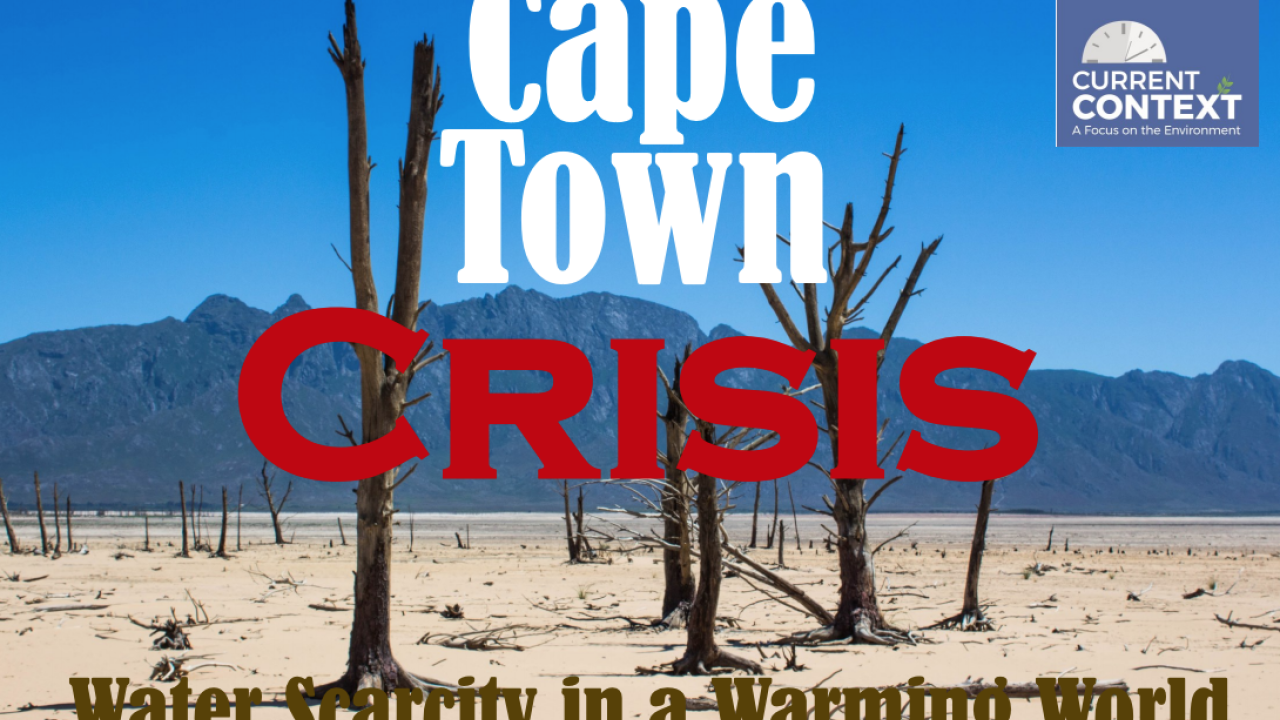
Cape Town and Water Scarcity
Abstract: Californians know drought. It is an ever present concern in this arid state, particularly as its population and economy – and therefore the demand on fresh water – continue to grow. A recent five-year drought prompted Governor Brown in 2015 to mandate a 25% reduction in urban water use, and state water officials set a goal of 55 gallons a day per resident for personal, indoor water use. After heavy rains last winter, the governor declared the drought over in April 2017 and lifted these targets. Nearly every month since, Californians have been conserving less water. Meanwhile, the bulk of California’s water supply – approximately 60% - supports agricultural crops and livestock. When the inevitable happens and water supplies become low again, everyone and everything in California feels the impact – farmers make tough decisions about what and how much to grow, wildlife habitat declines, and certain jobs (in farming, food processing, winter recreation, and even semiconductors) can disappear.
Teaching suggestions:
The challenges presented by water scarcity will be increasingly relevant for students as the global population grows and the amount of Earth’s fresh water remains largely fixed. Already, 40% of the world’s population lives in areas affected by water scarcity (see map below).
Map of areas of physical and economic water scarcity - see Current Context for greater detail

In California, drought is a common occurrence, and can be alleviated in part by wise water management and conservation-oriented consumption habits. Perhaps the most powerful way for students to think about water is to consider their own reliance on this resource. This easy to use and visually-engaging online questionnaire helps a person determine his or her approximate water footprint, based on things like habits in the house, forms of transportation, and diet: https://www.watercalculator.org/. This calculator is best geared toward middle school and older students who have a good sense of household practices, but with younger students it may be an interesting exercise to project the questionnaire overhead and complete the questions with the input of the whole class. “Tips” at the end of the questionnaire provide strategies for decreasing water usage.
Given that water scarcity is a global issue, students may want to compare statistics on water usage in other countries: https://www.watercalculator.org/footprints/water-footprints-by-country/. The more industrialized countries, on average, have a higher per capita water footprint than countries that have fewer industrial plants and operations. Students can also examine standards of living and climate when comparing water usage by country. In the history-social science classroom, investigations about water usage and supply can be an avenue for exploring a country’s economic and social history – when and how did its agriculture and industry evolve? Who were the laborers and who invested capital in these economic pursuits? What were the social repercussions of agricultural and economic development – did it displace populations, spur labor unions, create concentrations of wealth? How did the local, state or federal government regulate or subsidize water in a way that influenced these economic endeavors? These are just a few ways to investigate history through the lens of a natural resource that is essential to all societies.
Read more here. capetowndesalination.pdf
